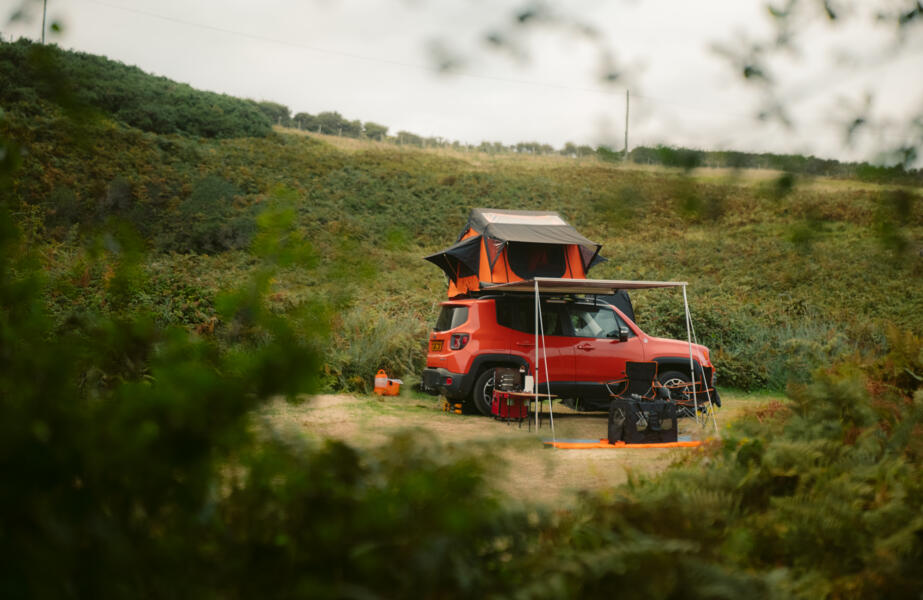
Freedom of nature
Sustainable getaways
Real human connections
Camping with a rooftop tent on your car
Imagine travelling through the Netherlands, Scotland or Africa with a rooftop tent on your car and camping freely in the most beautiful places.
Imagine travelling through the Netherlands, Scotland or Africa with a rooftop tent (RTT) such as a TentBox on your car and camping out at the most beautiful places. Sounds like a dream, right? My husband and I have been dreaming for years of exploring the world in a cool 4x4 and pitching a rooftop tent on it in the evenings. Packing up and taking off wherever and whenever we want to and always having our bed with us has always been the dream. Unfortunately, we’re not there yet. A few years ago, we dipped our toes in the nomad life by going on a road trip through Scotland with a roof tent on the car and it was amazing. Wondering how we experienced camping with a rooftop tent? You can read about it in this article, including the advantages and disadvantages of camping with a rooftop tent. And no –despite our fantasising, you definitely do not need a flashy four-wheel drive to use one!
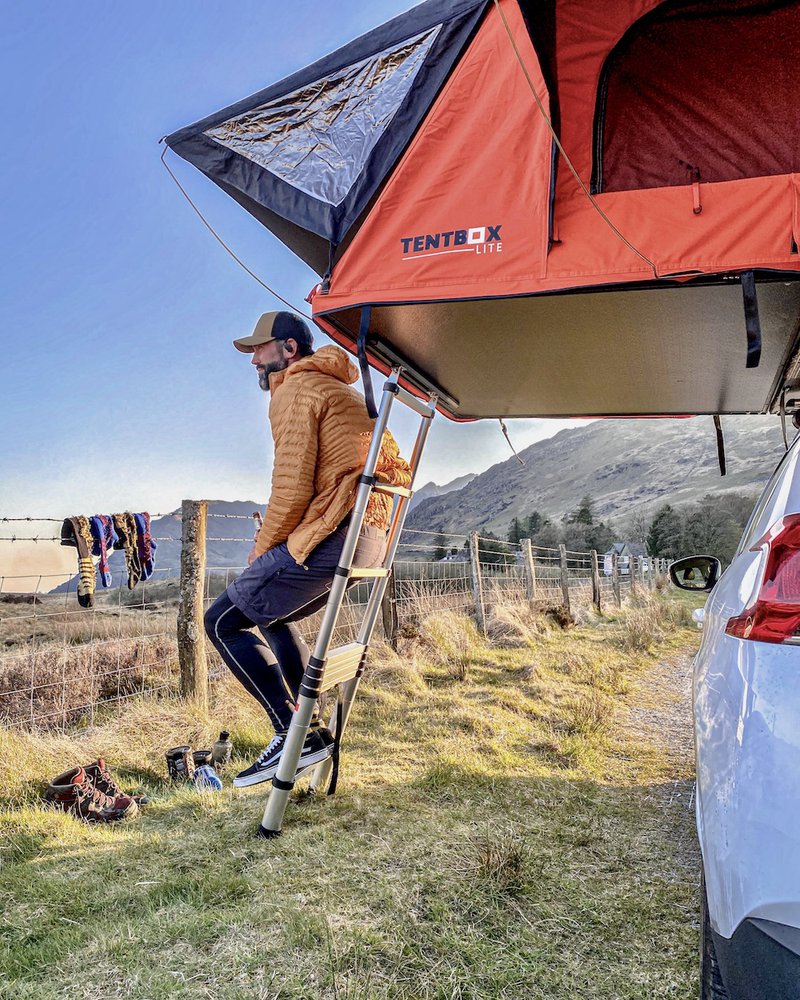
My name is Kirsten and I am a photographer and the person behind the Dutch travel blog Where She Goes. Where She Goes is a travel blog for everyone who loves the outdoors, camping trips and unique places to sleep in nature. I am often on the road exploring and photographing all kinds of dream spots and unique (sustainable) accommodations, such as forest cabins and treehouses. You can expect articles from me, as a Campspace columnist, with handy camping tips and articles about the coolest camping and glamping spots.
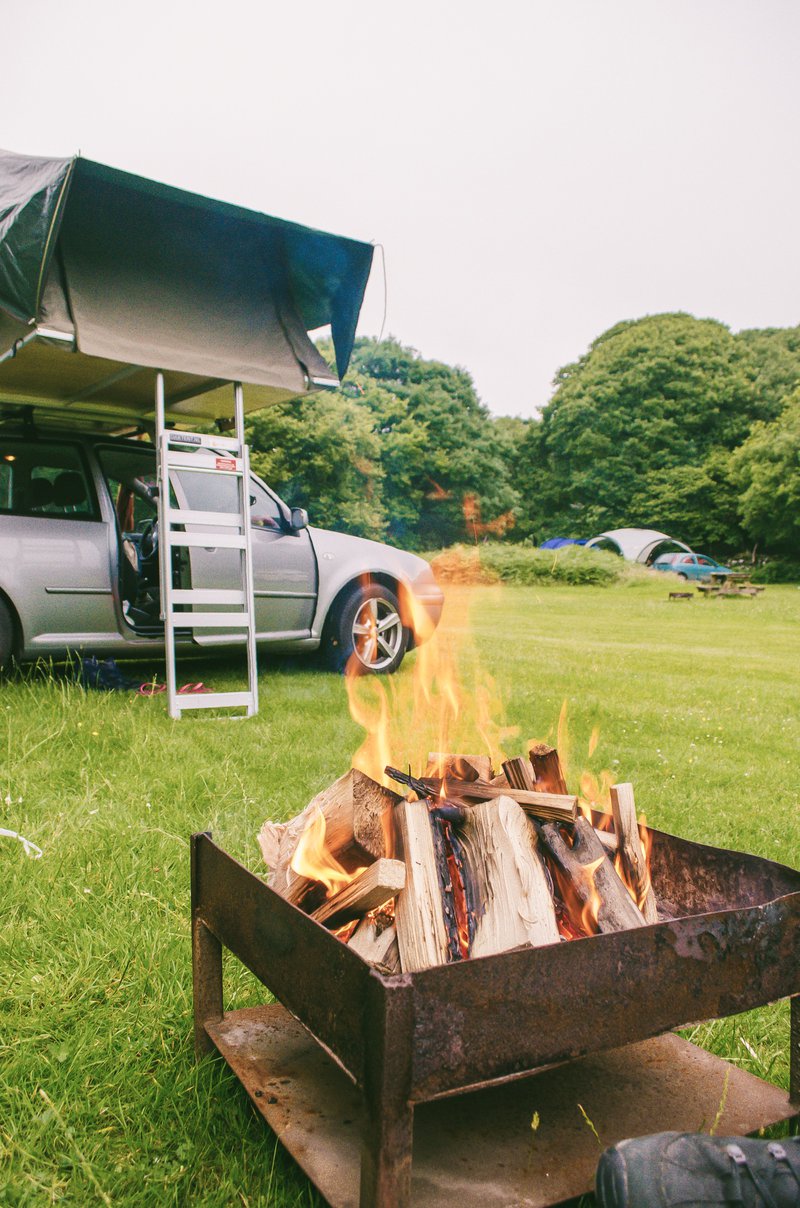
What exactly is a rooftop tent?
The name says it all: a rooftop tent is a tent that attaches to the roof of your vehicle. So you basically sleep on the roof of your car, tucked safely away from any goings-on at ground level. If you’ve ever seen a four-wheel drive with a sort of package on its roof racks, there’s a good chance it’s a rooftop tent. Many people recognise roof tents from adventurous safaris in Africa. But you can also enjoy a holiday with a TentBox and your own car closer to home.
Until a few years ago I thought that it was only possible to attach a roof tent to a four-wheel drive. But nothing could be further from the truth, because as long as you have a sturdy roof rack, you can pitch one on a small car too.
Renting a rooftop tent
You don’t have to buy a rooftop tent immediately; you can also rent one first. Can you imagine how happy I was when I found out about this a few years ago? At that time, we were planning a road trip through Scotland and were looking for a good sleeping solution for this trip.
Thankfully, rooftop tents like TentBox have become very popular in recent years. This also means that it’s easy to find one to borrow or rent. This way you see if rooftop tent camping is your thing before investing in one.
We went for the one with 140cm width, rented it for two weeks and drove to the Scottish Highlands. Now that we know more about rooftop tents and have had the pleasure of experiencing one, we plan on investing in one before our next road trip.
What? A rooftop tent?
Arriving at our first campsite in Scotland (near Loch Lomond in the Trossachs), the receptionist asked us if we had a tent or a camper van. We replied no, we had a rooftop tent. “A what?” she asked. Well, you know, a tent on the roof of your car. The receptionist looked out of the window at our car, a bit confused. Rooftop tents had yet to become a thing in Scotland. A lot has changed in the world of rooftop tents in the last few years. Now companies like TentBox are convincing a new generation of people to venture outdoors!
I’m writing this about six years after traveling to Scotland with the rooftop tent. Now they’re known everywhere and super popular. So I don’t expect you’ll encounter confusion like this anymore.
Park, unfold and you’re ready!
The first time we set up our TentBox in Scotland we were a bit unsure how best to set it up, but it turned out we only had to remove the cover, loosen two clips, unfold its ladder and the tent itself. With eight pins we created a small canopy.
Folding the rooftop tent to put it away is done in exactly the same way, in reverse order of course. The more often we set up and folded the tent, the easier it became. After a while it only took us two minutes to unfold the rooftop tent. Which resulted in comments from our camping neighbours, saying “That’s just brilliant”!
Before we went camping with the rooftop tent, we always were a little bit jealous when we saw our campervan neighbours, parking, unfolding their awning, grabbing a bottle of wine and settling in. Rooftop tents give you the feeling of building a treehouse as a child, which in our opinion is much better!
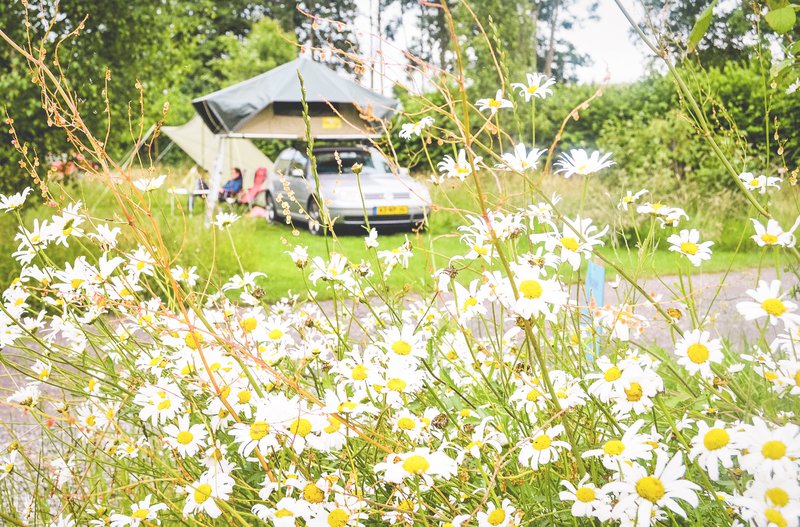
The disadvantages of a roof tent
I can almost hear you thinking: “Does a roof tent have any disadvantages then?” It does. Even though we hadn’t encountered many, there are a number of things to keep in mind when you go on an adventure with a rooftop tent:
- You have to fold the tent every time you want to leave by car: We didn’t see this as a problem, because we spent the night at a different camping spot every night. And you don’t keep a lot of things in your tent, so it doesn’t take that much time. If you do find it an inconvenience, then it might be a good idea to bring bicycles with you for shorter daytrips.
- You live out of your vehicle: You can’t store a whole lot of stuff in your tent, so you kind of live out of your vehicle. It takes some organising every time you pack up. For example, you have to figure out where you leave your shoes when you go to sleep and where you keep your clothes that you want to wear the next day.
- The biting midges of Scotland: Smaller than mosquitoes, but 1000 times more annoying. These midges are found in the highlands of Scotland from May until September. These tiny flies fly around you in clouds, are aggressive (especially) at sunrise and sunset, bite viciously and cause a lot of itching. What does this have to do with a rooftop tent? The moment these midges ‘attack’ you, you just want to get away from them. The roof tent we camped with came with beautiful insect screens, which probably work very well against a lot of insects, but not against midges. Turning on the light in the rooftop tent when the midges were flying around was therefore out of the question. If you’re looking for a rooftop tent, pay close attention to the screens.
- When it rains you have to sit on your bed and wait: You can choose the width of your tent, but most roof tents are mainly intended for sleeping. So when it rains, you’ll be sitting in your car or on your mattress on the roof of your car. Fortunately, there are also roof tents that you can attach an under tent to. This ensures that you have a place to sit and cook when it’s raining.
I really can’t think of any more cons. So let’s move on to the advantages.
The advantages of a rooftop tent
- You can unfold the rooftop tent in no time: It’s great to grab your seat after unfolding the tent and pour yourself a well-deserved drink.
- Your mattress is already in the tent: No hassling with inflating air mattresses or self-inflating mats. You can often leave your sleeping bags and pillows in the roof tent when folding it up.
- You can stay wherever you want: After all, you always have your gear with you. Wild camping is allowed in Scotland by the way, with permission from the landowner of course.
- No cold from the ground: Especially in countries like Scotland, where the temperature can drop a lot at night, it can be quite cold to sleep on the ground. You don’t have to worry about that with your rooftop tent.
- The tent is waterproof: Which means that it’s not a problem to fold the roof tent when it rains or when the tent is still wet (if of course you unfold it afterwards).

And let’s face it: it’s an amazing adventure!
A rooftop tent is a real eye-catcher. People stopped all the time to take a good look at or to have a chat with us about how ‘brilliant’ and ‘genius’ the roof tent was and I could only agree with them. I was very sorry that we had to hand our roof tent back. We’ll definitely go camping with a roof tent again and will be aiming to use a TentBox this time!
Which rooftop tent should you choose?
Nowadays there are so many rooftop tents to choose from. I can imagine that it’s hard to know which one is best for you. There are budget friendly soft shells – with a soft cover – and expensive hard shells – which look like a roof box – and then there’s everything in between. There are tents with panoramic windows (sky gazers) to look at the stars from bed. And there are roof tents that have the option to expand with a large under-seat tent. No matter the roof tent you choose, it’s important to pay attention to the length and width of the mattress, the width of the tent itself, the insect screens, and the way the roof tent attaches to your car’s roof. In other words: is the tent suitable for your vehicle and your roof rack?
Camping with a rooftop tent on your car is an adventure that you definitely want to cross off your bucket list. Experience the freedom, the convenience and the great outdoors!
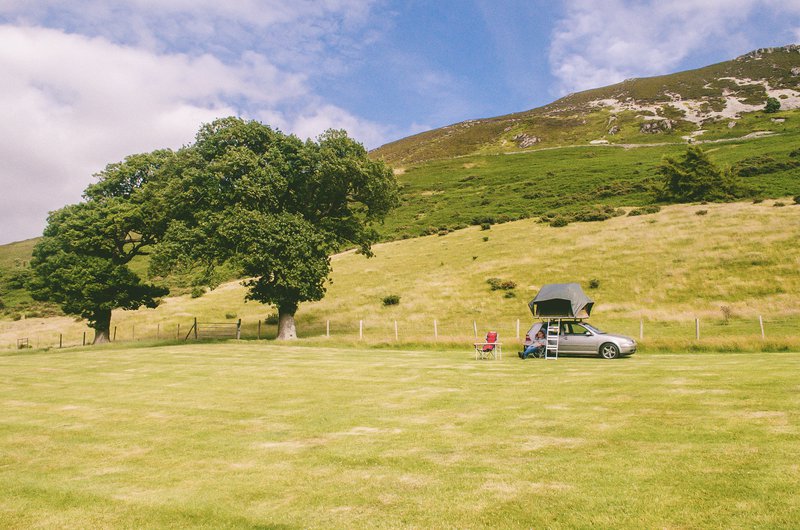
Would you like to read more about my camping and glamping adventures and about the best (nature) campsites? Please take a look at my website Where She Goes and my Instagram page.
Find your sustainable getaway
Up to 95% CO2 reduction if you book a campspace adventure. Learn more